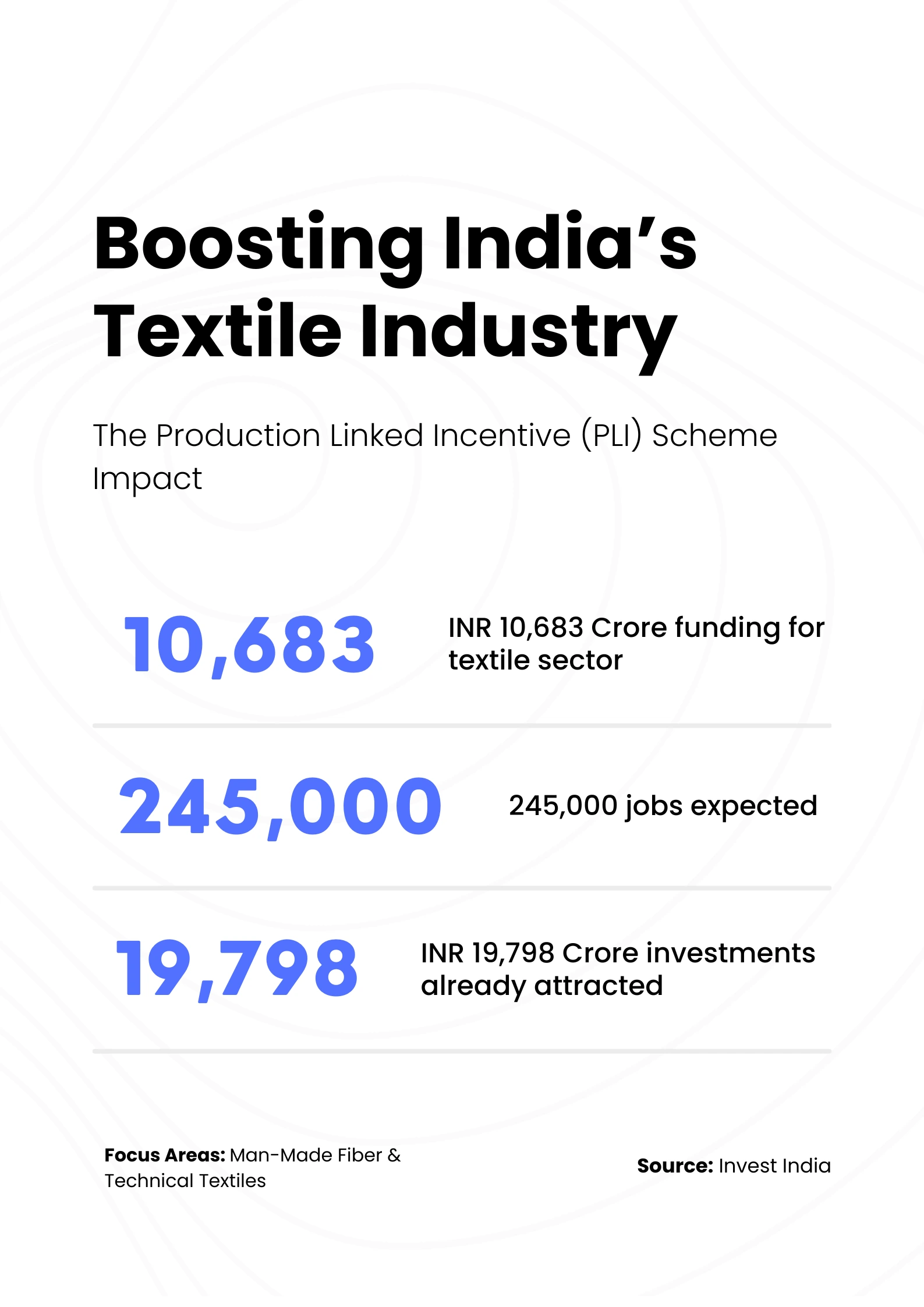How to Find a Supplier for Clothing Business

Image source: Indian Textile Journal
If you are looking to start a clothing business, one of the biggest first steps will be finding a supplier to whom you can go back for help time and again.
Whether you are starting a small boutique, planning to sell online or even about wholesaling, a good reliable supplier is a pretty important consideration for your business.
Finding the right supplier
Here, I will take you through simple steps on finding and working with suppliers who fit your needs.
Get Clear on Your Needs
Before getting into how to find a supplier for clothing business, let’s zoom in on what you actually need.
First start thinking of the style and type of clothing you want to sell. Are you doing a sportswear line, casual wear, or something more high fashion?
Deciding on your clothing type helps you understand the kind of supplier you’re looking for and where to find them.
Think about the target market you are catering to.
Are your products mostly going to cater to young adults, children, or men and women in professional jobs?
That will be a big help in choosing the right materials, price range, and designs for your goods.
You also have to determine how big you want to get. Is it just going to be a small shop, or are you envisioning being some sort of future semi-wholesaler supplying goods to other shops?
Figuring this out now will save you much grief down the road.
Start Your Supplier Search
Let’s dive right in to some of the very practical ways for you to begin your search.
Now, there isn’t exactly one right place to look, so feel free to explore a few of these options and see what works best for you.
Local Markets and Trade Shows
Some of the largest clothing hubs in India include Surat for women’s apparel, and Erode, famously known as the Textile Valley, for every kind of textile product.
If you go to these places, then you will literally be in the game-changer’s hands.
Here, you can touch the fabrics, see the quality firsthand and bargain over prices in front of people.
Trade shows are also great for this, because they allow you to meet hundreds of suppliers at one go.
B2B Marketplaces
Today, most suppliers actually live online.
Platforms like IndiaMART, Alibaba, and Exporters India make it so much easier to connect with reputable suppliers.
It lets you check the products, reviews, and even chat with suppliers before committing.
Suppliers love online platforms because they have daily buyer leads and exposure worldwide, meaning more business for them and more options for you.
Social Media and Networking
Never underestimate social media.
Sites like LinkedIn, Instagram, and even Facebook groups are all stacked with supplier profiles.
More importantly, some suppliers will showcase collections and connect directly with business owners on these sites, which is a great way to see if their vibe and quality match what you’re looking for without having to travel.
Chamber of Commerce and Industry Associations
Industry associations and chambers of commerce are also sources of leads; the Clothing Manufacturers Association of India may have a list of local suppliers and manufacturers it keeps.
Some of them would even be able to assist you in getting in touch with a reputable contact in the region.
You could ask your local Chamber of Commerce for the same.
 Source: Invest India
Source: Invest India
Supplier Evaluation and Selection
Finding a supplier only marks half the battle; that is because you will still need to scrutinize your options. In evaluating, here is what to do:
Get Some Samples
Never miss this step. Samples let you test fabric quality, durability, stitching, and finish.
After getting the samples, you have to put yourself into the shoes of the customer: would you be satisfied with buying this product?
This is your best chance to separate suppliers from the rest who do not fit the standards in your list.
Pricing and Minimum Orders
The prices and MOQs differ significantly.
When it is your first time, you will mostly avoid companies whose minimum order quantities (MOQs) are too high.
You should find a company offering competitive pricing and willing to work it out for you, especially when you begin on a shoestring budget.
Understand clearly the structure of their pricing and MOQ as well as whether they can offer you a discount for large orders.
Delivery Times and Reliability
Whether a supplier consistently delivers within a standard number of days will depend on what you consider a standard delivery timeline.
Delays occur, but if a supplier is constantly late, that is a red flag.
Deliveries on time are important, mainly if you are dealing with seasonal trends.
Ethical Standards
Customers are getting more and more conscious of how and where their clothes are made.
If your target market places sustainability or cares about ethical production at the top of their list, then make sure it is the same with your supplier.
Get certifications or ask them directly about labor practices.
Building Strong Supplier Relationships
Having found one that fits, you now work to develop the relationship.
Clear communication is essential in ensuring that things do not go off the rails.
Here are a few tips in getting off on the right footing:
Set Clear Expectations: Establish what you want from the supplier in terms of quality, quantity, and deadlines. The more specific you are, the better.
Regular Quality Checks: You should not rely on the supplier’s word alone—be regular in checking your orders, especially in the early stages.
Be open to feedback: Suppliers often have much experience within an industry. If they have suggestions on how to adjust your design or the choice of materials needed for the production of your product, take their recommendations seriously.
There Are Various Clothing Suppliers
There is no such thing as one-size-fits-all clothing supplier for clothing businesses. Here are the most common ones:
Manufacturers: These suppliers manufacture clothes from scratch.
If you have very specific designs in mind and want to create almost a unique brand, then going directly to the manufacturer might be best for you.
Wholesalers: These are suitable for small shops or even online shops, which already have existing stock.
That’s good in cases if you urgently need an immediate entry into the latest trends.
Dropshippers: In dropshipping, you do not hold any type of inventory.
When the consumer buys something, the dropshipper has it sent directly to them.
This is a very popular option for those who wish to keep upfront investment at a bare minimum.
Agents or Brokers: Another mediator that might help you to find good, professional manufacturers.
Frequently for a fee, agents or brokers will negotiate and handle dealing with the sourcing.
Use Multiple Suppliers
It is always a good practice not to depend on one supplier, particularly when you have huge orders.
You will always have flexibility because you have several suppliers with you.
If one incurs some delay or has a stock issue, you will not necessarily break your business since you still have an alternative.
If you start small you may want to consider suppliers that are closer to where you live.
Local suppliers are easier to reach, and it is very convenient for you to travel out to inspect the goods.
For some businesses, the convenience of dealing with regional as opposed to international suppliers saves money in shipping and delivers faster.
If you are targeting semi-wholesale, where you are supplying to small shops, then over time, you’ll want to create a network of outlets.
An excellent name in your locality as a semi-wholesaler may bring long-term benefits, especially if you’re putting together your branded label and selling to small retailers as branded items.
Alternatives to Clothing Manufacturers
Not every entrepreneur with the aspiration of starting up a clothing line has to go all the way into full-scale manufacturing.
There are great alternatives and highly in-demand solutions, particularly for India’s small scale industries.
Dropshipping
It’s wonderful if you don’t want to carry any type of inventory.
You put the products up in your store and let the supplier ship directly to your customers when there’s an order.
It is really low-risk and allows you to test a series of different products with minimal upfront costs.
Dropshipping is often a very common route for new online clothing stores because you do not have to manage warehousing, which keeps your initial investment low.
Wholesale
Wholesale is great if you need to have control over your stock and don’t want special design orders.
In this method, you purchase pre-manufactured garments in bulk from a wholesaler at a cheaper per-unit price.
Most Indian wholesalers have enormous product lines, particularly in cities like Surat, which specializes in ladies’ wear, and Ludhiana, known for winter garments.
With wholesale, you enjoy the benefit of buying at a relatively low price with the stock prepared for swift sales.
This is an excellent aspect for those who run a physical shop and also in an online platform that is in need of a constant inventory.
Print on Demand (POD)
It is ideal for entrepreneurs who want to customize designs, with no large quantities in advance
The POD supplier prints your design on blank apparel only once there is an order.
It is the most common choice for niche brands targeting a small audience, as you can really focus on creativity without worrying about inventory.
POD has recently gained popularity in India through platforms such as Printrove and Blinkstore that make launching a brand easy without big investments at the beginning.
Overseas vs. Domestic Clothing Manufacturers
A huge decision in determining how to find clothing manufacturers for your business is whether to go local or international.
Let’s break down the advantages and disadvantages to help you decide.
Advantages of Domestic Clothing Manufacturers
Quick Communication: Dealing with Indian suppliers will mostly be without a lot of language barriers and faster responses.
When changes have to be made, you can better communicate your needs.
Shortened Delivery Times: You can source from India and save shipping time which easily lets you manage seasonal demand with ease.
Lower Import Fees: You also save on custom duties, import tax and high rates you pay for shipping internationally if you are still considering your budget.
Quality Control: Having to visit the local suppliers gives you a better opportunity to inspect quality before you buy.
Advantage of International Clothing Manufacturers
Low Cost of Production: International suppliers, like in China and Vietnam, offer the cost of production at a relatively reduced level, which is quite helpful for new setups.
Variety of Products: Overseas manufacturers often have a wide variety of fabrics, materials, and designs.
Such variety becomes a true asset if unique styles or custom designs are in question.
Scalability: Most overseas manufacturers are lean operations, so they can accommodate a high volume production run that is perhaps apt to keep up with rapid increases in scale if that is what you are looking for.
Which is Right for You?
If your brand values swift delivery and customer satisfaction higher, then a domestic supplier will work for you.
Overseas suppliers, however, will work better if lower costs and unique styles are of prime priority.
If it’s a small start or a test of the market, then yes, you can work with Indian vendors.
If you already are an established business and you want to scale further, then maybe international suppliers can give you the price benefits you need.
Payment Terms
Once you’ve found your supplier, you have to agree on the payment terms. It’s how and when you will pay for goods so getting this right is really important.
Cash on Delivery (COD): This is quite common in small, local deals.
It’s a system where you pay after receiving goods. It’s low-risk; however, it’s much less common with larger suppliers, especially internationally.
Advance Payment: Some suppliers expect one or more components of the total amount as an advance to start producing.
This advance typically falls between 30 and 50 percent of the order amount.
Even though it gives the suppliers assurance, always make sure you have a good contract in place to protect your investment.
Letter of Credit (LC): LC is a form of bank-backed promise to pay upon the fulfillment of certain conditions.
It is commonly used in international trade and safeguards both you and the supplier, so it is a safe way to order large quantities from an overseas supplier.
Credit terms: some suppliers give credit periods after delivery, say 30 or 60 days.
This is very useful in cash flow as you can sell part of your stock before paying for it.
Final Thoughts
Finding a supplier for your clothing business is quite a journey and need not be overwhelming.
Start by having clear goals, doing some local research, and take advantage of online platforms to broaden your options.
Remember, a good supplier is a very important partner in your success, so keep the relationship professional, yet friendly, and stay flexible while your business grows.
And if you are one of the many entrepreneurs who have found themselves still scouring for an idea to start a business, then be sure to check out our article, what business can I start with 50,000 in India? for more suggestions.
With the right suppliers in your corner, you’ll be happily moving toward building a great clothing business!
Disclaimer: The information contained in this blog, The Growth File, is intended for general informational purposes only and does not constitute professional advice. Always consult with a qualified professional before making any business decisions based on the information you find on this blog.
